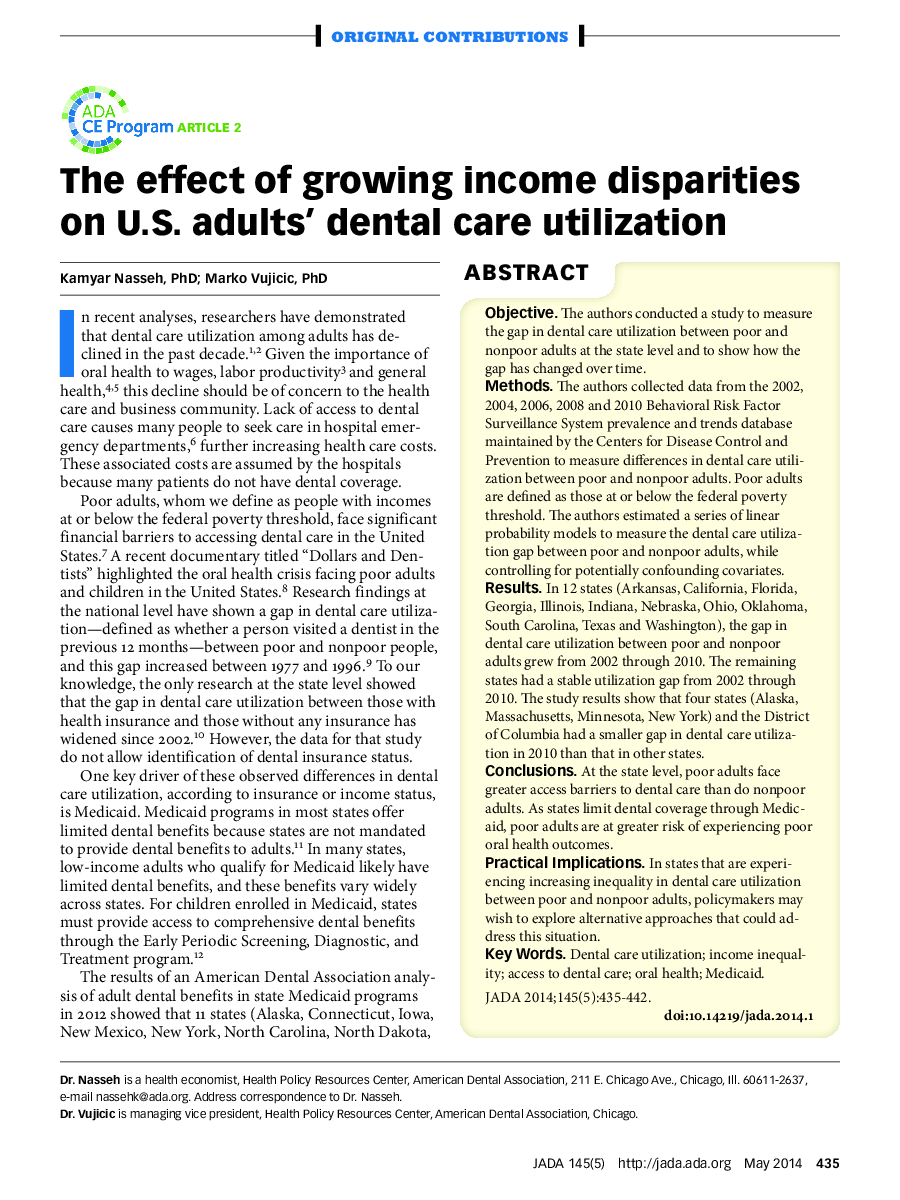| Article ID | Journal | Published Year | Pages | File Type |
|---|---|---|---|---|
| 3136855 | The Journal of the American Dental Association | 2014 | 8 Pages |
ABSTRACTObjectiveThe authors conducted a study to measure the gap in dental care utilization between poor and nonpoor adults at the state level and to show how the gap has changed over time.MethodsThe authors collected data from the 2002, 2004, 2006, 2008 and 2010 Behavioral Risk Factor Surveillance System prevalence and trends database maintained by the Centers for Disease Control and Prevention to measure differences in dental care utilization between poor and nonpoor adults. Poor adults are defined as those at or below the federal poverty threshold. The authors estimated a series of linear probability models to measure the dental care utilization gap between poor and nonpoor adults, while controlling for potentially confounding covariates.ResultsIn 12 states (Arkansas, California, Florida, Georgia, Illinois, Indiana, Nebraska, Ohio, Oklahoma, South Carolina, Texas and Washington), the gap in dental care utilization between poor and nonpoor adults grew from 2002 through 2010. The remaining states had a stable utilization gap from 2002 through 2010. The study results show that four states (Alaska, Massachusetts, Minnesota, New York) and the District of Columbia had a smaller gap in dental care utilization in 2010 than that in other states.ConclusionsAt the state level, poor adults face greater access barriers to dental care than do nonpoor adults. As states limit dental coverage through Medicaid, poor adults are at greater risk of experiencing poor oral health outcomes.Practical ImplicationsIn states that are experiencing increasing inequality in dental care utilization between poor and nonpoor adults, policymakers may wish to explore alternative approaches that could address this situation.
